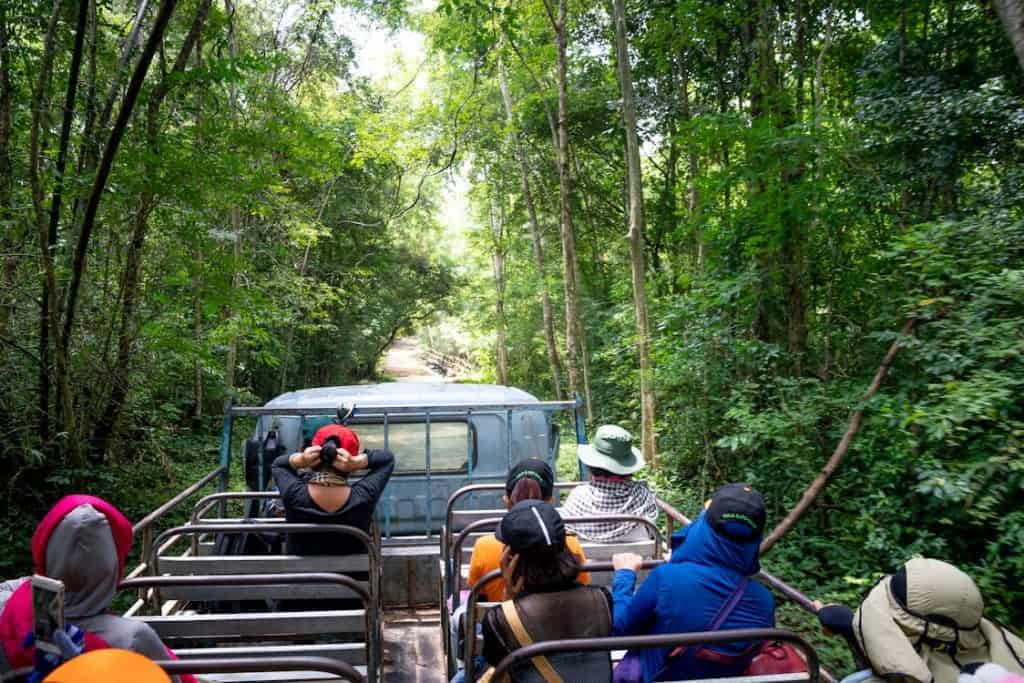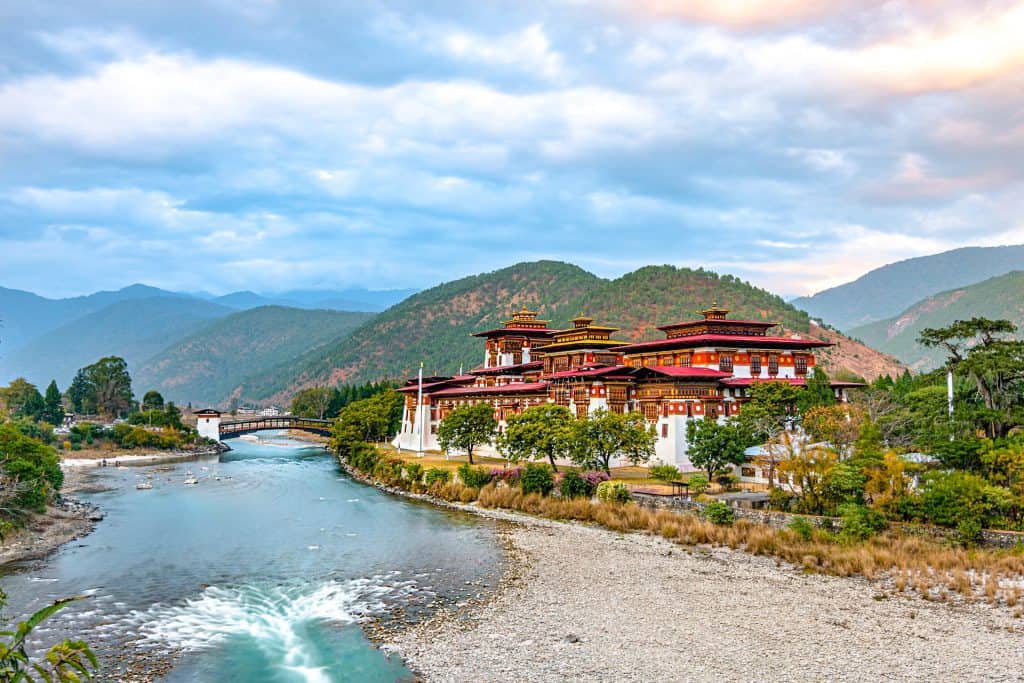In an age where environmental crises and the dilution of cultures loom large, the travel industry is at a pivotal juncture, transitioning from the ideals of sustainability to the groundbreaking concept of regenerative travel.

The emerging paradigm of regenerative travel doesn’t just aim to reduce harm or maintain the status quo; it seeks to actively heal the destinations we visit, making them better for future generations. This global story explores how countries, communities, and innovative businesses across the world are embracing regenerative travel, creating a blueprint for a more harmonious relationship between travellers, the environment, and indigenous cultures.
At its core, regenerative travel is an acknowledgement that it’s not enough to simply sustain; we must actively contribute to regeneration. This means going beyond eco-friendly practices and working towards restoring ecosystems, strengthening local communities, and preserving cultural heritage. It’s a holistic approach that considers the long-term impacts of tourism on a destination’s environmental, social, and economic health.
Global Pioneers in Regenerative Travel
Bhutan: The Dragon Kingdom’s Green Blueprint
Bhutan, the mystical Himalayan kingdom, is a beacon of regenerative travel, pioneering a model where environmental conservation and cultural preservation are paramount. Known for its philosophy of Gross National Happiness, Bhutan places the well-being of its citizens and the natural environment above economic gain. The country mandates that at least 60% of its land remain forested for future generations, intertwining sustainability with state policy.

Bhutan’s approach to tourism, characterized by its high-value, low-impact strategy, ensures that travel experiences contribute positively to both the environment and local communities. Visitors to Bhutan become part of conservation efforts, cultural preservation, and community development projects, leaving the kingdom richer in spirit and nature than before their arrival.
Iceland: Harnessing Nature’s Power for a Sustainable Future
Iceland stands out as a leader in regenerative travel, harnessing its unique geothermal and hydroelectric energy resources to power almost the entire country sustainably. This commitment to green energy is mirrored in its tourism practices, with a focus on preserving its dramatic landscapes, waterfalls, geysers, and hot springs. Iceland encourages responsible travel through education and conservation efforts, promoting experiences that respect the delicate balance of its unique ecosystems.

The country’s innovative approach to using its natural resources without depleting them serves as a model for sustainable living and regenerative travel, making it a destination where travellers can witness the power of sustainable innovation in harmony with nature.
New Zealand: A Legacy of “Kaitiakitanga”
New Zealand not only captivates with its stunning landscapes but also leads by example in environmental stewardship through the Maori principle of “kaitiakitanga.” This deep-rooted respect for the land is woven into the fabric of New Zealand‘s tourism, which promotes interactions with nature that are respectful and enriching.

The country’s approach to tourism, emphasizing conservation and cultural immersion, invites visitors to partake in efforts to preserve its natural beauty while experiencing the richness of Maori culture. From participating in tree-planting initiatives to engaging with local Maori communities, travellers are encouraged to contribute to the land’s regeneration, ensuring that New Zealand’s splendour endures for generations to come.
Costa Rica: The Pioneers of Eco-conscious Travel
Costa Rica’s reputation as a haven for eco-tourism is evolving into a leading example of regenerative travel. The nation’s commitment to restoring its ecological paradise extends beyond conservation to the active regeneration of its natural wonders. Efforts to rehabilitate rainforests, safeguard endangered species, and revive coral reefs are integral to the country’s vision.
Costa Rica’s model of community-based tourism ensures that the rewards of tourism flow back into local hands, supporting sustainable development and cultural preservation. Through this holistic approach, visitors not only revel in Costa Rica’s rich biodiversity but also play a part in its ongoing story of ecological restoration.
Scotland: Blending Tradition with Environmental Stewardship
Scotland is setting the pace for regenerative travel in Europe, marrying its wealth of natural and cultural heritage with forward-thinking conservation strategies. The nation’s rewilding projects, aimed at rejuvenating its ancient woodlands and wetlands, demonstrate a commitment to ecological restoration that mirrors its reverence for history and tradition.
Scotland’s approach extends to nurturing local customs and practices, offering travellers a chance to delve into authentic Scottish experiences. From exploring the rugged Highlands to learning about traditional crafts and folklore, visitors contribute to the vitality of Scotland’s communities and the preservation of its landscapes, ensuring the legacy of its natural and cultural treasures thrives.
Goa, India
Amidst its renowned beaches and vibrant culture, Goa is emerging as a trailblazer in regenerative travel within India and beyond. The state is leveraging its rich natural and cultural assets to pioneer initiatives that not only mitigate the impacts of tourism but actively contribute to environmental restoration and community empowerment.
Its efforts to preserve and celebrate Goan culture and heritage, through community-led tourism experiences, ensure that visitors leave a positive impact. This holistic approach to tourism, which enriches both the traveller and the host community, cements Goa’s position as a leader in the global shift towards regenerative travel, showcasing a model that other destinations can aspire to.
Goa – As a case study for Regenerative Travel
Goa’s approach to tourism is embarking on a transformative journey, intertwining the essence of regenerative tourism with a comprehensive roadmap aimed at redefining its tourism landscape. This vision of regenerative tourism positions Goa as a leader in shaping a more sustainable and equitable future for travel
Taking Regenerative centre stage, the Goa International Travel Mart (GITM) 2024, Suneel Anchipaka, IAS, Director Tourism & Managing Director GTDC, in his keynote address said, ” Our commitment to Regenerative Tourism goes beyond mere preservation; it encompasses a holistic approach that seeks to regenerate and rejuvenate our ecosystems, communities, and cultural traditions.”

He outlined the tourism blueprint saying, “Our vision for Goa’s tourism sector harmonizes with nature, respects local cultures, and fosters meaningful connections between visitors and our communities. By embracing Regenerative Tourism, we not only enhance the visitor experience but also ensure the long-term sustainability of our tourism industry.
A notable focus of this year’s GITM was on regenerative tourism, a paradigm shift towards sustainable practices that prioritize the restoration and revitalization of local ecosystems and communities. The momentum and enthusiasm generated by GITM leave me confident that Goa’s potential as a premier destination for regenerative tourism will continue to flourish.”
This strategy is meticulously designed around five core priorities, each contributing significantly to the sustainable and inclusive growth of Goa’s tourism sector.
Green Tourism stands at the forefront, focusing on eco-friendly practices that aim to sustain Goa’s natural beauty and resilience. This initiative seeks to balance tourism development with environmental preservation, ensuring that Goa remains a vibrant and sustainable destination for generations to come.
Digitalization is identified as a crucial tool in enhancing Goa’s tourism competitiveness. By embracing technology, the region is set to improve accessibility, efficiency, and the overall visitor experience, making strides towards a more inclusive and sustainable tourism ecosystem.
Skills Development is another pillar, aiming to equip the youth with the necessary skills for employment and entrepreneurship within the tourism industry. This focus on education and training is expected to catalyze innovation and sustain economic growth, fostering a community that is well-prepared to thrive in the evolving tourism landscape.
Support for Tourism MSMEs underscores the importance of small and medium-sized enterprises, startups, and the private sector in driving innovation and dynamism within the tourism industry. By nurturing these entities, Goa sets the stage for a more vibrant, diverse, and competitive tourism offering.
Lastly, Destination Management takes a holistic view, emphasizing the strategic oversight of tourism destinations to ensure they align with the Sustainable Development Goals (SDGs). This approach aims to harmonize tourism activities with broader goals of sustainability, community well-being, and environmental protection.
The Goa Tourism Roadmap also aligns with key Sustainable Development Goals, highlighting tourism’s potential to contribute positively to decent work and economic growth, innovation and infrastructure, sustainable cities, responsible consumption and production, and fostering partnerships.
An intriguing intersection exists between spiritual tourism and regenerative tourism, with the former playing a pivotal role in fostering a travel ethos that benefits individuals, communities, and the environment. This synergy emphasizes a travel philosophy that not only seeks personal enlightenment but also contributes positively to the regeneration of the destination’s social, environmental, and economic fabric.
Through this integrated approach, Goa is not just aiming to preserve its allure as a travel destination but is striving to enrich it, ensuring that tourism acts as a force for good, rejuvenating both the land and its people.
The Role of Travellers and Businesses
The shift towards regenerative travel is not just about destination management but also involves a change in the mindset of travellers and businesses. Travellers are increasingly seeking meaningful experiences that offer a sense of connection and contribution to the places they visit. In response, businesses are innovating to meet this demand, offering experiences that allow tourists to participate in local conservation projects, cultural workshops, and community development programs.
Challenges and Opportunities
While the transition to regenerative travel presents numerous opportunities for environmental restoration and cultural preservation, it also faces challenges. Balancing the economic benefits of tourism with the need for conservation and community well-being requires careful planning and collaboration among all stakeholders. Moreover, measuring the impact of regenerative practices remains complex, necessitating ongoing research and adaptation.
Looking Ahead
As we look to the future, regenerative travel offers a hopeful vision for the tourism industry, one where travel becomes a driving force for positive change. By choosing destinations that prioritize regeneration, supporting businesses that adopt sustainable practices, and engaging in experiences that enrich rather than exploit, travellers can play a crucial role in this global movement. The journey towards regenerative travel is not just about seeing the world; it’s about leaving it better than we found it, ensuring that the wonders of our planet remain vibrant for generations to come.
Read more: Latest



